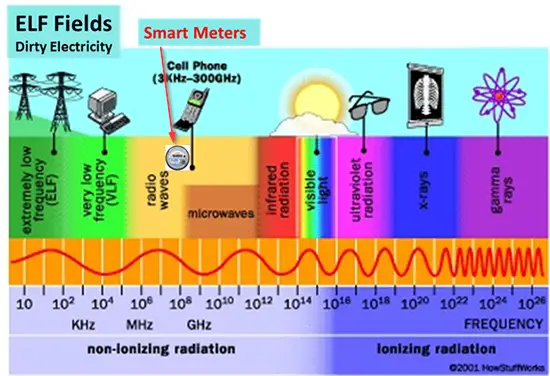In an era characterized by unprecedented technological advancements, Artificial Intelligence (AI) has emerged as a double-edged sword. On one hand, it promises to revolutionize industries, enhance efficiency, and pave the way for innovative solutions to long-standing problems. On the other hand, the unchecked proliferation of AI poses significant risks to individuals, societies, and economies, with students being particularly vulnerable to its effects. In this comprehensive article, we delve deep into the various risks associated with AI for students, from academic challenges to mental health concerns and ethical dilemmas. It is crucial to navigate this uncharted territory carefully, as the impact of AI on students can shape the future of education and beyond.
Understanding Artificial Intelligence
Before we dive into the specific risks associated with AI for students, it’s essential to establish a foundational understanding of what AI is and how it works. In this section, we will briefly explore the concepts and technologies behind AI.
(a). What is Artificial Intelligence?
Artificial Intelligence refers to the simulation of human intelligence processes by machines, especially computer systems. These processes include learning, reasoning, problem-solving, perception, and language understanding. AI systems aim to replicate and automate tasks that typically require human intelligence, such as image recognition, natural language processing, and decision-making.
(b). Machine Learning and Deep Learning
Machine Learning (ML) is a subset of AI that focuses on enabling machines to learn from data and improve their performance over time without being explicitly programmed. Deep Learning, a subset of ML, involves artificial neural networks inspired by the human brain’s structure. These networks are capable of handling complex tasks such as image and speech recognition.
The Promise of AI in Education
AI has made significant inroads into the education sector, offering a range of opportunities and advantages. In this section, we explore how AI has the potential to revolutionize education.
(a). Personalized Learning
AI-powered educational platforms can adapt to individual students’ needs, offering customized learning experiences that cater to their strengths and weaknesses. This approach has the potential to improve educational outcomes significantly.
(b). Efficient Administrative Tasks
Educational institutions can leverage AI for administrative tasks such as student registration, attendance tracking, and resource allocation, reducing the administrative burden on teachers and staff.
(c). Accessibility and Inclusivity
AI can help make education more accessible to students with disabilities by providing tools for speech-to-text and text-to-speech translation, thereby leveling the playing field for all learners.
(d). Early Detection of Learning Disabilities
Machine learning algorithms can identify learning disabilities and challenges in students at an early stage, enabling timely interventions and support.
Risks of AI for Students
While the promises of AI in education are alluring, it is imperative to recognize the potential risks and challenges it poses for students. In this section, we discuss various facets of these risks.
(a). Data Privacy Concerns
One of the most significant concerns in an AI-driven educational environment is the collection and utilization of student data. AI systems often require extensive data to function effectively, raising questions about the privacy and security of sensitive student information.
(b). Bias and Fairness
AI algorithms can perpetuate or even exacerbate biases present in the data they are trained on. This bias can manifest in various ways, such as favoring certain demographics or perpetuating stereotypes, leading to unequal educational opportunities.
(c). Job Displacement
The integration of AI into education could potentially lead to the displacement of educators and support staff, which may result in job loss and economic challenges for those employed in the sector.
(d). Over-Reliance on Technology
An over-dependence on AI-driven educational tools may hinder the development of critical thinking and problem-solving skills in students, as they may rely on automated solutions rather than developing their own problem-solving abilities.
(e). Mental Health Implications
Excessive screen time, social isolation, and the pressure to excel in an increasingly competitive educational landscape can contribute to mental health issues among students.
(f). Ethical Dilemmas
AI introduces complex ethical dilemmas in education, such as the use of AI to write essays or take exams, blurring the lines between academic integrity and technological assistance.
Mitigating Risks and Ethical Considerations
Recognizing the risks associated with AI in education is only the first step. In this section, we explore strategies to mitigate these risks and discuss the ethical considerations that must guide the integration of AI into education.
(a). Data Privacy and Security
Educational institutions must prioritize data privacy and security. This includes transparent data usage policies, encryption, and robust cybersecurity measures to protect student information.
(b). Fairness and Bias Mitigation
AI developers and educators must work together to ensure that AI systems are trained on diverse and unbiased datasets. Regular audits and fairness assessments of AI algorithms should be conducted to identify and rectify biases.
(c). Human-AI Collaboration
Rather than replacing educators, AI should be seen as a tool to augment their capabilities. Human-AI collaboration can enhance teaching and learning, combining the strengths of both.
(d). Digital Literacy and Critical Thinking
Educational curricula should include digital literacy components that teach students how to critically evaluate information and algorithms, enabling them to navigate the digital landscape responsibly.
(e). Mental Health Support
Educational institutions should provide mental health support services to address the psychological challenges that may arise from increased reliance on technology and academic pressures.
(f). Ethical Guidelines
The development and use of AI in education should adhere to clear ethical guidelines, with educators, students, and AI developers actively involved in shaping these principles.
The Future of Education with AI
In this section, we take a forward-looking approach and explore the potential future of education with AI. What could the educational landscape look like, and how can we harness AI’s capabilities for the benefit of students and society?
(a). Enhanced Learning Experiences
With responsible AI integration, students can access tailored, engaging, and interactive learning experiences that cater to their unique needs and preferences.
(b). Empowered Educators
Educators can leverage AI to streamline administrative tasks, gain insights into student performance, and focus more on personalized teaching and mentorship.
(c). Global Access to Education
AI-driven online education platforms can provide students worldwide with access to quality education, bridging educational inequalities.
(d). Lifelong Learning
AI can support lifelong learning by offering personalized skill development and retraining opportunities throughout one’s career.
Conclusion
As AI continues to reshape the educational landscape, the risks and opportunities it presents to students cannot be understated. The path forward involves responsible AI development, ethical considerations, and a commitment to safeguarding the interests of students. By addressing the challenges and embracing the potential benefits of AI in education, we can pave the way for a more equitable, efficient, and innovative educational future, where students are empowered to thrive in the digital age.







Leave a Reply